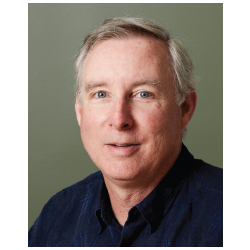
By / Peter Boileau
Chairperson, SMACNA-Western Washington Technical Committee
In our role as designers and installers of ventilation and temperature control systems for all types of buildings, we are expected to be the leaders in providing systems that maintain high levels of indoor air quality. Our customers depend on us to guide them on serious financial decisions to select the best approach to guaranteeing not only comfort but also an indoor environment that provides safe, clean ventilation. We are the experts in this field, and this article hopefully will provide some background and insight into what our industry is capable of given today’s challenges.
Attempts to control indoor temperatures began in ancient Rome, where wealthy citizens took advantage of their remarkable aqueduct water distribution system to circulate cool water through the walls of their homes. This idea ended with the collapse of the Roman Empire and left us with little more than human powered fans to “keep us cool and ventilated” until the industrial revolution.
In late 19th century America, engineers had the money and the ambition to pick up where the Romans left off. An example of their early efforts occurred in the summer of 1881. President James Garfield was attempting to recover from an assassin’s wound and got a respite from Washington, D.C.’s oppressive summer heat thanks to a system involving air blown through cotton sheets soaked in ice water. Garfield’s comfort required enormous energy consumption, since ice-making was a new industry at the time. His caretakers reportedly went through half a million pounds of ice in the two months before his ultimate death.
With very few exceptions, most large buildings at the turn of the 20th century were naturally ventilated using the “stack effect”. This technique involves introducing outside air into a building at ground level and allowing it to migrate up the building, picking up interior heat and gaining temperature to increase its buoyancy and therefore rise. This warm air then exits either through roof openings for large assembly spaces (churches, lecture halls) or up through tall building elevator shafts into office building corridors, through transom windows above private office doors, and out the exterior windows. This method of ventilating tall buildings like the Smith Tower in Seattle proved very effective, as the air velocity traveling through these buildings on hot days necessitated the use of paperweights by building occupants in order to keep documents from flying off desks!
Natural ventilation was “state-of-the-art” when the Spanish flu, also known as the 1918 influenza pandemic, began its spread around the world. Lasting from February 1918 to April 1920, it infected 500 million people—about a third of the world’s population at the time—in four successive waves. The death toll is typically estimated to have been somewhere between 20 million and 50 million, although estimates range from a conservative 17 million to a possible high of 100 million, making it one of the deadliest pandemics in human history. In the United States, about 28% of the population of 105 million became infected, and 500,000 to 850,000 (0.48 to 0.81% of the population) died.
Since that pandemic, humankind has developed the building comfort and ventilation systems we routinely install today. Although we have made great progress in improving the indoor environment, we are still faced with challenges, including how to keep our buildings safe for occupancy during the current pandemic and how to deal with the increasing problem of wildfire smoke.
The use of ultra-violet (UV) lights to kill viruses is a technology that has been in our industry for a long time. It has become extremely popular in the last year as we build and retrofit critical buildings (typically hospitals, labs, and EMR support facilities) with this technology. Fortunately, the COVID-19 virus is larger than many similar highly infectious viruses and is easily trapped in HEPA rated filters. Studies indicate that as COVID-19 typically travels within airborne water particles (increasing its size), filters with a MERV rating of at least 13 have proven effective. As MERV-13 filters can be easily installed in most medium to large central HVAC systems, this should be the recommended approach in all buildings with this type of system installed. Small, distributed HVAC systems may be more challenging to add MERV-13 filtration to as small systems typically do not have the static pressure/fan horsepower to accommodate the larger pressure drop required by this enhanced filtration.
Once virus particles are trapped in HVAC filter systems, they can be easily killed by the use of UV lights located upstream of these filter banks, facing downstream, and shining on the filters. Thought should also be given to having another set of lights facing upstream and shining on cooling coils, as these potentially wet coils can collect live viruses they can remain alive. Systems that have both sets of UV lights ensure not only clean air into the building, but also safe access for maintenance personnel who need to change filters and service internal parts of air handling units.
Also entering the market recently are special-purpose recirculating filtration units. These are typically portable, floor-mounted units similar to the Titus THRC HEPA room air cleaner, or above-ceiling permanently installed fan-filter units similar to similar to the Titus FFDER fan filter diffuser units that have been typically used in clean-room applications, but which are now being specified and installed in all types of COVID critical spaces not served by central systems.
Another benefit of installing enhanced filtrations systems in buildings of all types is their ability to reduce or eliminate wildfire smoke from building interiors. Population pressure on forest lands, coupled with changing weather patterns due to climate change and possibly current forestry practices, appears to be causing the frequency, scale, and duration of wildfire smoke covering the west coast of the United States and Canada to increase. Weeks and potentially months of lingering wildfire smoke has become a serious health hazard in this region, and as we are responsible for the systems that provide ventilation and indoor air quality, we need to provide solutions to this challenge, as well.
Fortunately, buildings that are equipped with at least MERV-13 rated filters can eliminate most smoke particles and floating ash from the airstream. These filters should be changed before wildfire season in June and, of course, after fire season ends in the fall. Consideration should also be given to mid-season filter changes, depending on the severity of wildfires in a given area. Fine smoke particles may not even be trapped by HEPA filtration, so for critical areas occupied by sensitive occupants, consideration should be given to the installation of electro-static precipitant filtration for these areas, as this technology will eliminate virtually all fine smoke particles from any airstream, if properly applied.
Before the start of this year’s wildfire season, we should all reach out to our property management and facilities operations customers and review and discuss possible upgrades to their buildings so we can make them aware of the solutions available and potentially get our customers’ buildings ready and fully operational with filtration enhancements to provide clean and safe ventilation systems as we re-occupy these buildings post COVID-19 and prior to this year’s wildfire season.
We would like to note that the thoughts expressed above are the opinions of the author with input from the SMANCA-Western Washington ICC Code Committee/Tech Committee. The committee has reassembled for 2021 and will be continuing its updates and interpretations of the new 2018 Washington State Energy Code in future newsletter editions. Stay tuned! ■


